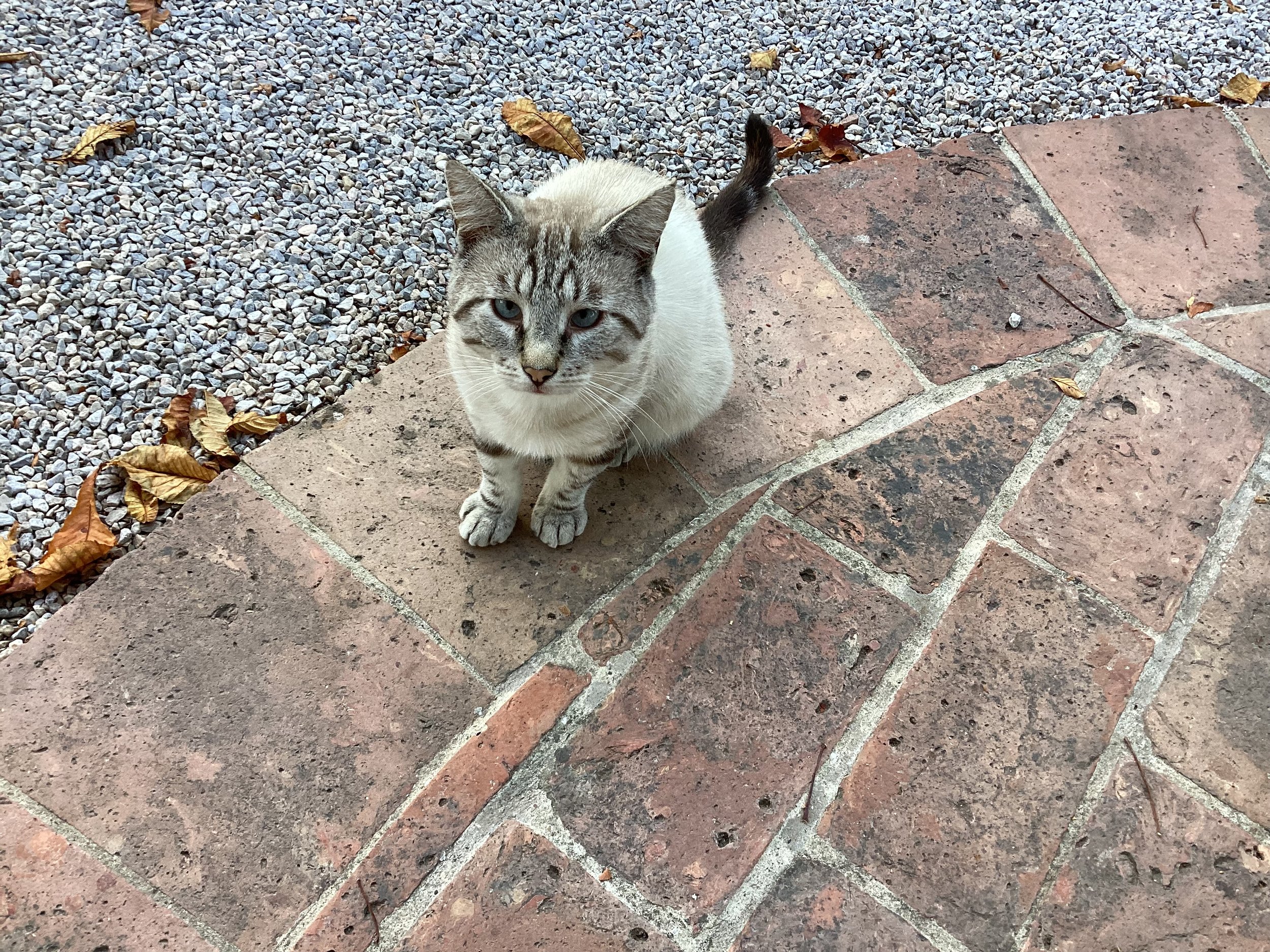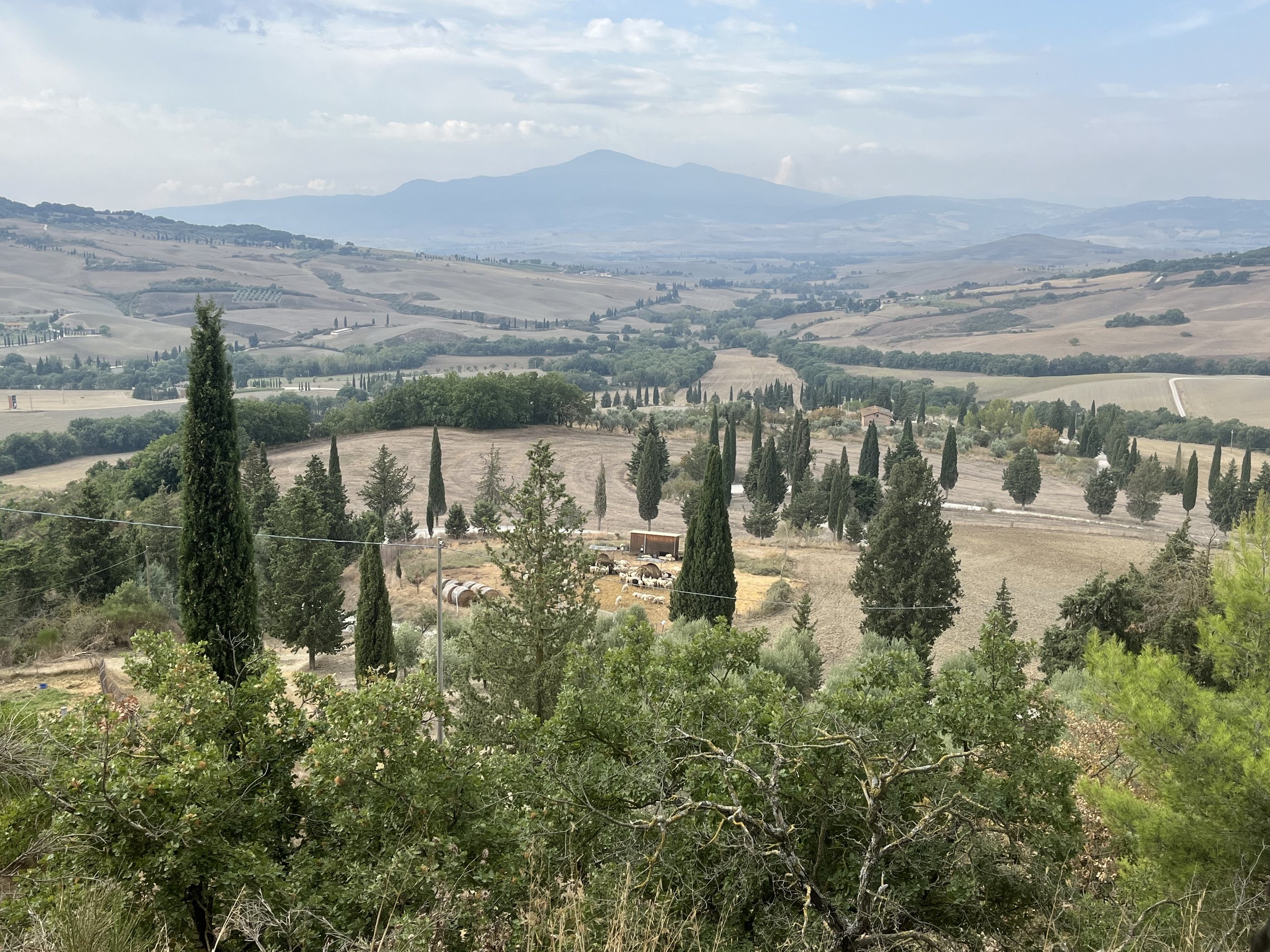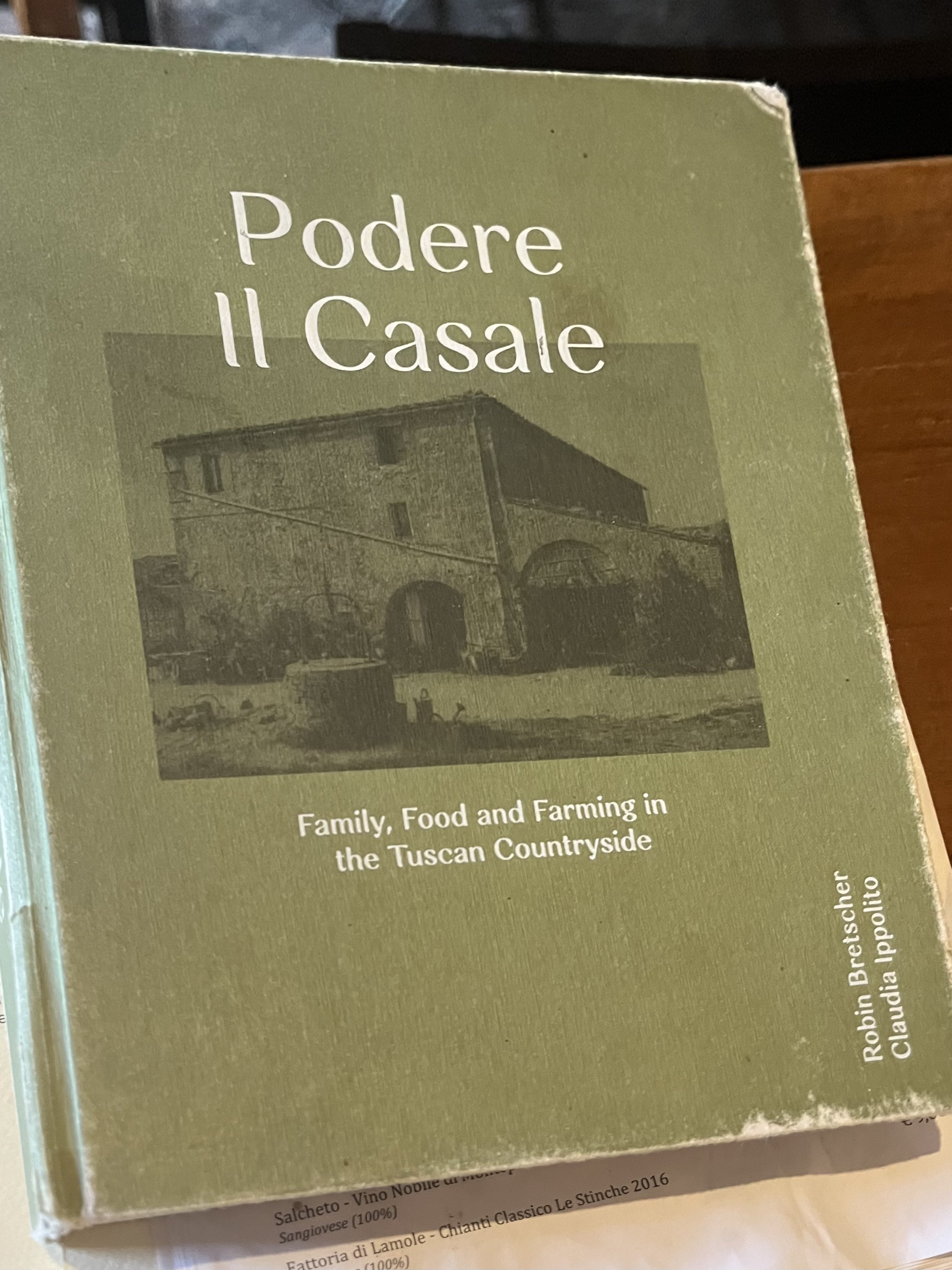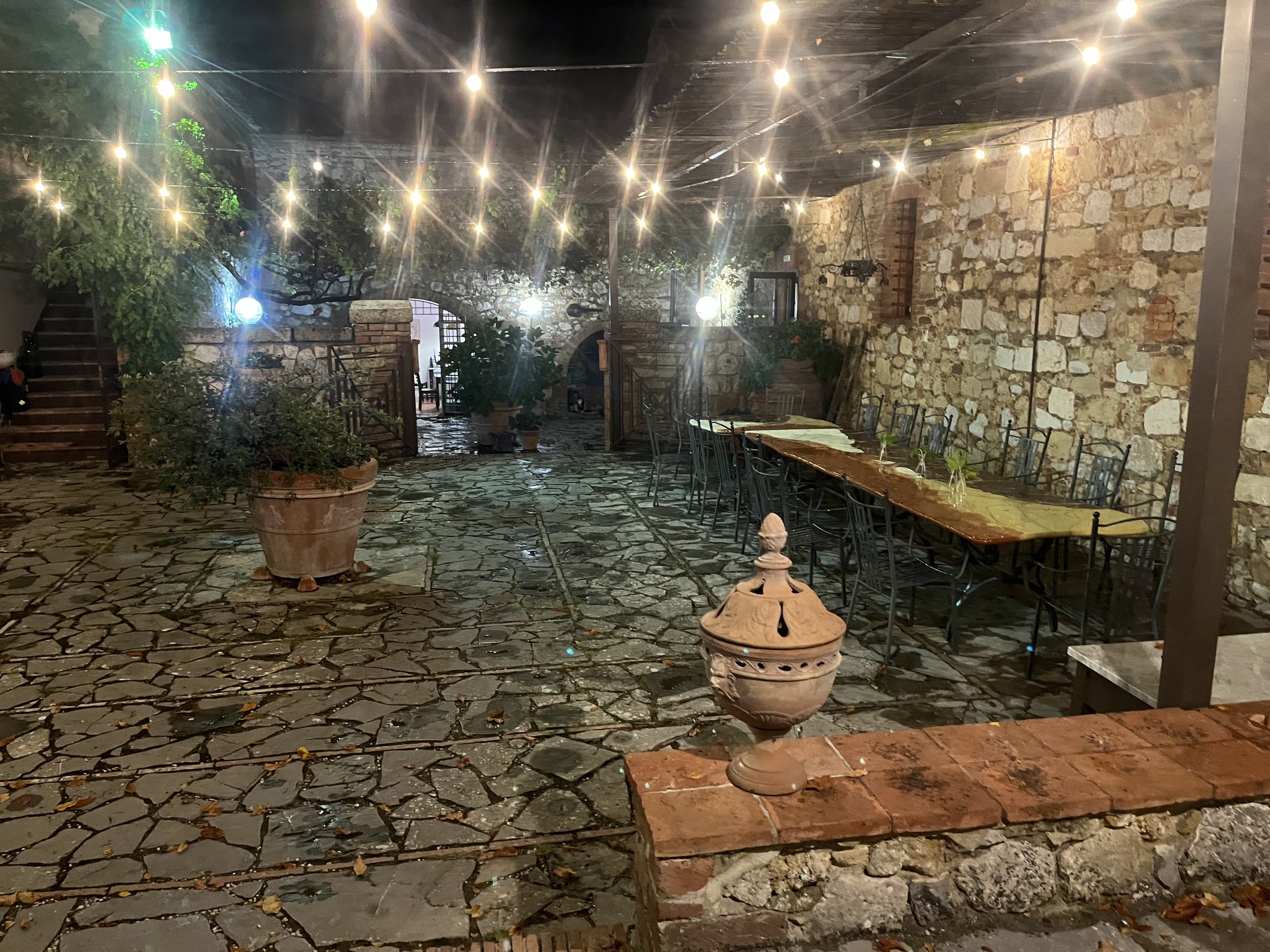Day 5
Funny how I’ve always loved strong coffee…but here, I must add milk or it’s too bold. So delicious, though. This morning we were again greeted by several of the many cats wandering the patio. Some places I’ve traveled have dogs wandering ad nauseum…here it’s cats. All are friendly, all want you to believe they’re starving.
Our first adventure of the day took us to Podere il Casale, a nearby working farm/restaurant with impressive food and cheese. We toured the farm, were given a cheese-making lesson, and made focaccia. Owners Sandra and Ulisse began the enterprize in the 80s when wanderlust brought them to Tuscany from Switzerland. Their mantra is s-l-o-w food and we all were given a lesson in the slow food movement and their dedication to organic, natural fruits, vegetables, cheese, meats, etc.
Ulisse’s self-taught cheese-making methods have garnered him rewards, as he supplies many high-end restaurants worldwide with his cheeses.
We were again told the story of how (until the late 1960’s) sharecropping was practiced in this area. The managers or owners of the land reaped the benefits of their workers’ labor and required up to 60% of the sharecroppers’ food/crop, etc. Because the sharecroppers were themselves dirt poor and needed what they’d grown for their own families, cheese they made was sometimes hidden from the managers/owners. Sharecroppers stored cheese where it wouldn’t be discovered: in grape must, hay, dirt, etc. They found that cheese stored in those elements took on interesting and pleasing flavors. Hence pecorino here is intentionally stored that way at times.
Ulisse also gave us a lesson in cheese making and shared that his cheese is made from three things: milk, rennet, and salt. The milk they have on this farm is from their goats, sheep, and because they bought a few cows several months ago, they will probably be making cow cheese in the future.
Sandra with pecorino cheese—the one on the right has the mold and the one on the left has had it removed with a brush.
One fact I hadn’t known was that the cedar trees that seem so iconic in the area came from the London to Rome journey many Christians were expected to make (Think Canterbury Tales here). These vertical trees symbolized an earth to heaven connection and signaled the pilgrims safe resting places along the way.
I learned something about wine today: it matters NOT how it’s stored–whether bottles are on their sides or upright. The key to wine storage is not to disturb it. Don’t mess around with moving it much.
And for those of you like me who prefer plain old water (“still” water), look for “ferme” on the bottles. If the bottle indicates “mossa” water, it’s sparkling.
The pandemic was difficult for tourism in Tuscany. The family at Podere il Casale used the downtime to produce a book about the history of the farm–complete with favorite recipes. It was an item I could not resist buying, and I’ll happily haul it home.
The cooking class and tour here are winding down. We can feel the end approaching, and tonight’s pizza dinner here at La Chiusa marked the beginning of our farewells. Plans were being made for transportation back to Rome or Florence, or even on to other adventures here in Europe. The walk from the restaurant back to our room was filled with strings of light guiding our way and filling our hearts.













